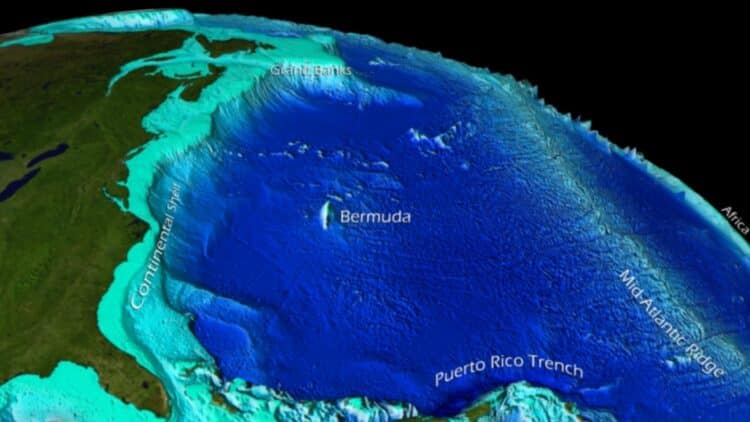The Earth’s interior has always been treated as a great enigma. While we can drill down to just a few kilometers of the crust, the mantle, which represents almost 84% of the planet’s volume, remains beyond our direct reach. So much so that, to see what’s happening down there, scientists rely on indirect signals, such as the seismic waves that travel around the globe after each earthquake. But now, an international team of geophysicists has brought an intriguing mystery to light: signals hidden in the depths of the Pacific suggest the presence of structures that shouldn’t exist there.
The mantle speaks: unexpected discoveries beneath our feet
We must remember that for decades, studies of the mantle relied on only a few specific types of seismic waves. It was a kind of partial ultrasound: useful, but limited. The big change came with the use of a technique called full-waveform inversion, which analyzes all the waves generated by earthquakes. This approach, besides being more accurate, requires supercomputers to process the data on a large scale.
This is exactly what the team led by Thomas Schouten, a doctoral student at the Institute of Geology at ETH Zurich, in collaboration with the California Institute of Technology, did. They applied the method to the lower mantle and found something unexpected. And then, in the second phase of the analysis, the revelation came: fragments resembling tectonic plates were present in places with no geological record of subduction. The biggest surprise was in the Western Pacific, where, according to current models, there should be no such traces.
The Earth hides secrets no one expected to find
Current models show that seismic waves travel slower or faster in certain regions of the mantle. This reveals differences in rock density and rigidity. But the exact underlying causes of these patterns still remain unclear. Schouten explains:
“With the new high-resolution model, we can see such anomalies everywhere in Earth’s mantle. But we don’t know exactly what they are or what material is creating the patterns we’ve uncovered.”
From this, the hypotheses under discussion begin:
- Ancient fragments of subducted plates: perhaps remnants that sank far beyond classic collision zones, preserved for over 200 million years.
- Primordial silica-rich pockets: pieces of the original mantle that have resisted convective flow since Earth’s formation about 4 billion years ago.
- Accumulations of iron-rich rocks: anomalous densities created over billions of years of internal movement.
In fact, Professor Andreas Fichtner, from ETH Zurich, uses a metaphor to illustrate the scientists’ perplexity: “It’s like a doctor who has been examining blood circulation with ultrasound for decades and finds arteries exactly where he expects them. Then if you give him a new, better examination tool, he suddenly sees an artery in the buttock that doesn’t really belong there. That’s exactly how we feel about the new findings.”
What the hidden mantle could mean for our planet
We know it may seem distant, but understanding what’s hidden in the mantle is crucial to understanding phenomena that directly affect Earth’s surface. These mysterious structures may end up influencing:
- The flow of heat within the planet, altering the convective currents that move the continents.
- The formation of mantle plumes, responsible for volcanic hotspots like those in Hawaii.
- The tectonic cycle as a whole, since the discovery of blocks outside the classic subduction zones forces a rethinking of how plates are born, move, and are destroyed.
We already know that anomalous structures exist in the lower mantle, but we still don’t know whether they’re sunken plates, primordial fragments, or something else entirely. To move forward, the researchers plan to combine different methods: from electromagnetic data to laboratory mineral physics experiments. And, of course, use increasingly powerful supercomputers to generate clearer models — which remind us of these other supercomputers that cracked the teleportation code.


